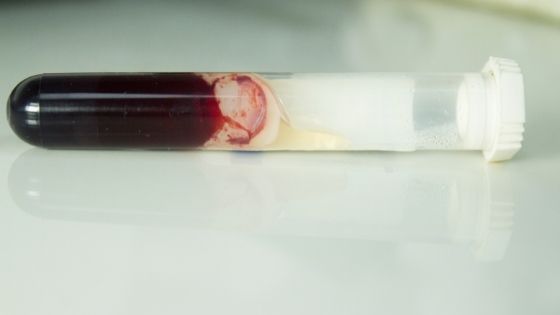Blood clots are semi-solid masses of blood that can block blood flow (thrombosis) or break loose (embolism) and travel to different body parts. Depending on their location and severity, blood clots can be potentially fatal.
Your doctor will likely conduct a physical examination to diagnose your condition. You may undergo a venous ultrasound or a CT angiography (CTA) scan of the chest, abdomen/pelvis, or head. The treatment may differ depending on whether the clot is located in an artery or a vein. Your condition may be treated with medication, catheter-directed thrombolysis, surgery, or inferior vena cava (IVC) filter insertion. For more information visit our website.
What are clots of blood?
Blood clots are semi-solid blood masses, and blood flows freely through veins and arteries in a normal state. Coagulation, or blood clotting, is necessary and expected. Blood clotting aids in stopping bleeding after a cut or injury. However, excessive clotting can result in serious complications.


When a blood clot forms, it can be stationary (referred to as a thrombosis) and obstruct blood flow, or it can break loose (referred to as an embolism) and spread throughout the body.
There are two distinct varieties of clots:
Arterial clots are blood clots that form in arteries. Once arterial clots form, they immediately cause symptoms. Because this type of clot prevents oxygen from reaching vital organs, it can result in complications such as stroke, heart attack, paralysis, and excruciating pain.
Clots that form in the veins are called venous clots. Typically, venous clots form gradually over time, and the symptoms of venous clots become progressively more apparent.
Blood clots can occur in numerous areas of the body, with each region exhibiting distinct symptoms:
- Blood clots in the legs and arms can cause various symptoms, including pain or cramping, swelling, tenderness, warmth to the touch, and bluish or reddish skin. Deep vein thrombosis refers to clots within more prominent veins (DVT). Additionally, blood clots can occur in smaller, more superficial veins.
- Common symptoms of blood clots in the heart include chest and left arm pain, sweating, and breathing difficulty.
- Common lung symptoms include shortness of breath or difficulty breathing, chest pain, and coughing. Other possible symptoms include perspiration, skin discolouration, leg swelling, irregular heartbeat and pulse, and dizziness.
- Patients with blood clots in the brain may experience vision or speech difficulties, seizures, and general weakness.
- Blood clots in the abdomen can manifest as severe abdominal pain, nausea, vomiting, diarrhoea, and bloody stools.
- A blood clot can be potentially fatal depending on its location and severity.
How are blood clots identified and assessed?
Your condition is evaluated differently depending on the location and type of your blood clot. In addition to performing a physical examination, your doctor will typically begin by obtaining your medical history, as this may provide information about the factors that caused the clot. In an emergency where patients may not describe their symptoms, doctors may immediately send patients for testing following a physical examination.
You may be given one or more of the following examinations:
This examination is typically the first step in confirming a venous blood clot—the use of sound waves to create an image of your veins. Doppler ultrasound may be utilized to visualize the blood flow within your veins. If ultrasound results are inconclusive, venography or MR angiography may be performed.
If your physician suspects you have a pulmonary embolism, you may undergo a chest CT angiography scan. The most prevalent cause of pulmonary embolism is a fragment of a leg or pelvic clot that has travelled to the lung. Your doctor may order a chest x-ray if they suspect you have a condition other than a blood clot.
CT angiography of the abdomen and pelvis: This CT scan may be performed if your doctor suspects a blood clot in your stomach or pelvis. In addition, it may be used to rule out other conditions that cause similar symptoms to blood clots.
CT angiography of the head and neck: If you exhibit symptoms of a stroke, your physician will order an urgent CT scan of the head to confirm the presence of a clot. In certain instances, your physician may prescribe a cerebral angiography exam. A carotid ultrasound could also determine if a blood clot fragment has reached your brain from your neck.
Blood clots can produce symptoms that resemble those of other diseases or conditions. To rule out additional requirements, you may be subjected to further testing.
How are clots of the blood treated?
Arterial clots:
Your physician may recommend catheter-directed thrombolysis, which delivers “clot-busting” drugs to the clot site, or surgery to remove the clot. As arterial clots can obstruct blood flow to vital organs, these therapies are designed to manage clots aggressively, and they are generally reserved for life-threatening or emergencies.
Venous clots:
If you are diagnosed with a deep venous clot, you will be prescribed blood-thinning medication to help thin your blood and make it easier to flow past the clot.
Your physician may recommend that you undergo inferior vena cava filter placement. This is advised for patients with a high risk of blood clots. A filter is inserted into a vein to prevent blood clot fragments from reaching the heart or lungs.
























